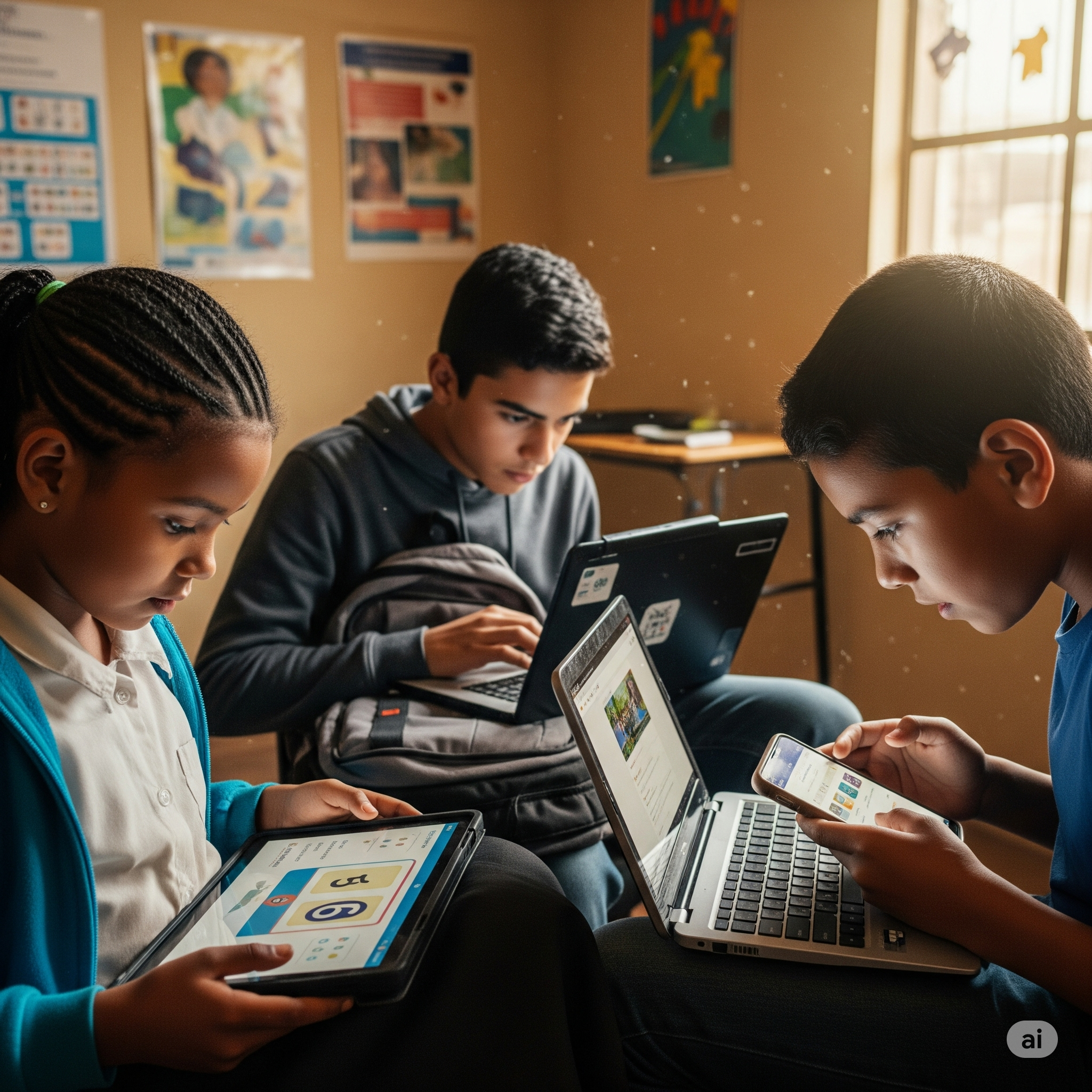
How EdTech Solutions Are Supporting Students from Low Socioeconomic Backgrounds
- admin
- August 5, 2025
- Uncategorized
- EdTech
- 0 Comments
In a country where education has long been a privilege of the few, EdTech platforms are becoming the bridge that connects opportunity to talent—regardless of financial background. For students from low socioeconomic communities, these solutions are more than apps or websites; they are lifelines to break out of poverty and dream beyond circumstances.
1. Learning Beyond Boundaries
Traditional education comes with barriers—high fees, physical distance, and outdated teaching methods. But EdTech is rewriting the rules. With low-cost subscriptions, free courses, and bite-sized learning modules, students who couldn’t afford tuition centers or expensive textbooks are now learning from their smartphones.
2. Digital Classrooms on a Budget
Platforms are offering more than just video lectures. Interactive tools, live doubt-clearing sessions, and AI-driven assessments help students understand their strengths and weaknesses—creating a personalized path to improvement.
Students who once relied on overcrowded classrooms or ill-equipped schools are now finding mentors and educators just a click away.
3. Breaking the Language Barrier
For students from marginalized communities, language has been a silent oppressor. Most competitive learning content was once limited to English or Hindi—languages alien to many.
Today, EdTech platforms are embracing regional diversity with lessons in Tamil, Telugu, Marathi, and other local languages. A child in Bihar no longer needs to fear algebra because they can’t understand the instructions.
4. The “Free” Factor: Leveling the Field
Cost is no longer an excuse. Many EdTech platforms provide free access to quality content—be it foundational courses, NCERT resources, or competitive exam preparation. This has been a game-changer for students preparing for JEE, NEET, and government exams.
For families that struggle to meet basic needs, free access to education isn’t just a resource—it’s hope.
5. Challenges Still Persist
Yet, the revolution is incomplete. The digital divide is real.
- Students share smartphones with siblings.
- Internet connectivity is weak or non-existent.
- Families struggle to pay for data packs.
For every child accessing EdTech, there’s another left staring at a blank screen.
6. Empowering First-Generation Learners
In households where parents never went to school, EdTech isn’t just about content—it’s about mentorship. Platforms are now offering career guidance, motivational workshops, and vocational skills training to empower students for the real world.
For a first-generation learner, a free coding class or a scholarship program can spark ambitions never dreamed before.
7. Real Impact: Stories That Inspire
From a small village in Rajasthan, where a student aced NEET using only free EdTech resources, to a boy in Assam learning app development on his father’s shared phone, these are not isolated stories—they are proof that EdTech works.
Success is no longer bound by money; it’s defined by access.
The Road Ahead
EdTech has opened doors, but the journey doesn’t stop here. For true change, platforms must:
- Develop offline solutions for areas without connectivity.
- Partner with local governments to improve digital infrastructure.
- Offer devices and scholarships to the most vulnerable.
Education is the great equalizer, and EdTech is proving that talent knows no income. The revolution is underway—one screen, one lesson, and one student at a time.
The question now is: How soon can we ensure no child is left behind?

